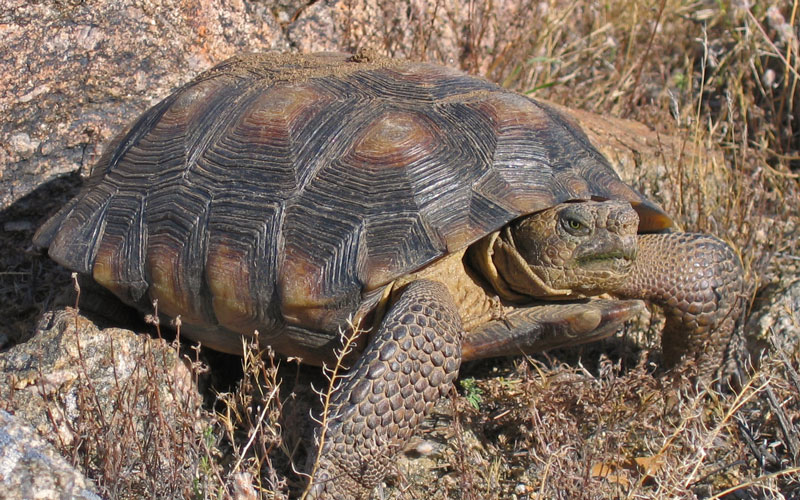The Arizona Game and Fish Department has seen a 56 percent increase in the number of desert tortoises available in its Phoenix adoption center compared to last year.
“The tortoises here in the Phoenix area have been breeding a lot for the last century, and so there’s lots and lots of people with pet tortoises that are producing more and more baby tortoises,” said Dr. Jay Johnson, a veterinarian. “And now there’s really an overpopulation problem.”
Last year, the Phoenix adoption center had 55 tortoises. It now has 86.
The department will make the tortoises available for adoption to residents living within the species’ native range, which includes the Phoenix, Bullhead City, Kingman, Lake Havasu, Tucson and Yuma areas. Veterinarians recently gave the reptiles a checkup to prepare for adoption.
“We’re introducing people to the idea of having a tortoise as a pet. We’re hoping to find some good homes,” spokeswoman Amy Burnett said. “Basically, we need you to adopt a desert tortoise.”
Although they do not look like a normal house pet, they communicate with humans more than people might think.
“They do learn to recognize human voices, and they’ll come when there’s food around,” Burnett said. “Some say that they actually recognize individual people’s voices. They’ll come in dog doors. They’ll learn that’s where the food is. They have these really human-looking eyes, and they seem to be wiser than what we give them credit for.”
These tortoises can live to be up to 100 years old, which means they might outlive their owners. But besides the lifelong commitment, experts said they are relatively low maintenance.
“You do have to do a lot of preparation – building a burrow, having the right food available for them and water,” Burnett said. “But other than that, they’re self sufficient. They don’t need regular attention like a dog or a cat. They’re not going to misbehave.”
Johnson is an avid tortoise fan.
“I got my first desert tortoise when I was 6 or 7, and I’ve had pet desert tortoises ever since,” Johnson said. “I really enjoy watching them be active and the things that they do. … Scooter would be right there at my feet looking up at me like, ‘Whatchya doin?'”
In October, the U.S. Fish and Wildlife Service announced that the Sonoran desert tortoise does not face the threat of extinction and planned to remove it from the Endangered Species Act candidate list. It does have state protections as a “species of greatest conservation need.”
It’s illegal to remove a tortoise from the wild. People must adopt tortoises – usually displaced because of construction or raised in captivity – through these adoption facilities, according to the state game and fish department.
Once captive, people cannot release desert tortoises back into the wild because they can transfer upper respiratory tract disease or pathogens to wild tortoises, Burnett said.
“It could be a death sentence for them or other tortoises they come into contact with,” Burnett said.
To adopt a free tortoise, visit AZgfd.gov/tortoise and fill out the forms. Adoption Day is April 9.
